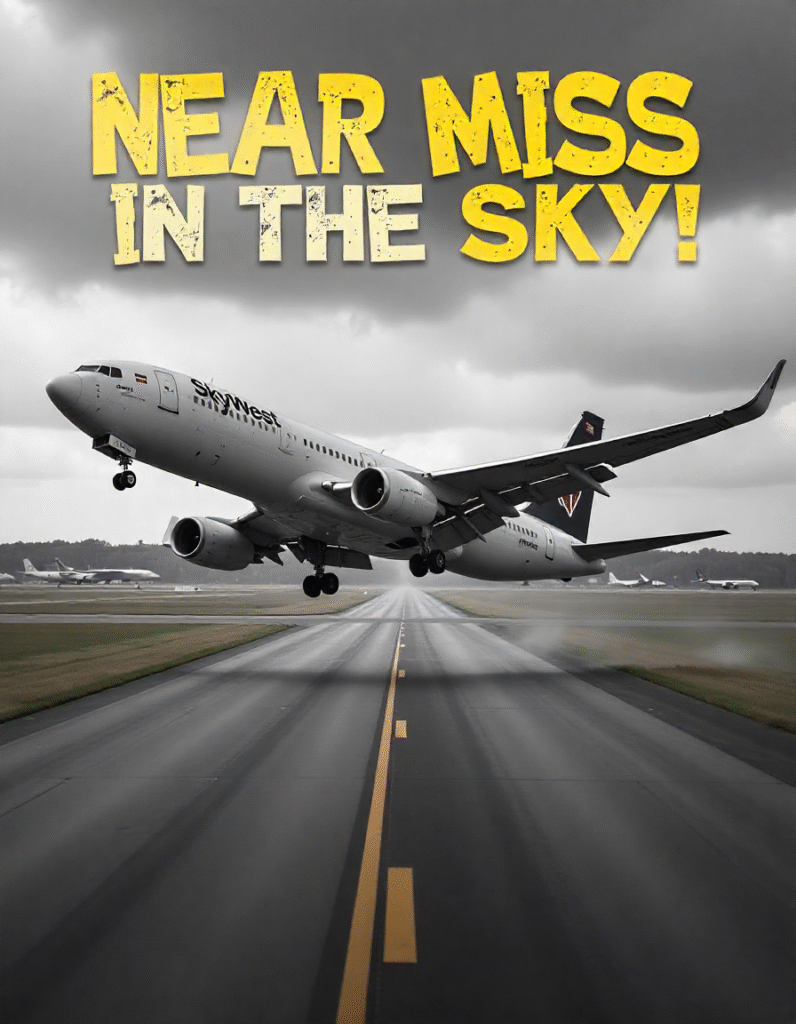A SkyWest pilot made an urgent go-around to avoid a B-52 bomber near Minot, North Dakota. Learn what happened in this high-stakes near miss.

Pilot Executes Emergency Maneuver to Dodge B-52 Bomber
In a startling moment high above North Dakota, passengers on SkyWest Flight 3788 were jolted by an unexpected move — an aggressive in-flight maneuver to avoid a potential mid-air collision with a U.S. Air Force B-52 bomber.
“This is not normal at all,” the pilot reportedly told passengers over the intercom, according to an inflight recording shared across social media platforms. The statement captured the urgency and seriousness of the incident.
What Really Happened in the Sky Over Minot?
On Friday, SkyWest Flight 3788 — operating as a Delta Connection — was approaching Minot, North Dakota from Minneapolis when the situation unfolded. The flight had been cleared for landing by air traffic control, as confirmed by a statement from SkyWest Airlines.
However, things took a sharp turn when the pilot spotted another aircraft directly in their approach path. That aircraft was no ordinary plane — it was a massive U.S. Air Force B-52H Stratofortress. In a split-second decision, the pilot initiated a go-around, a standard aviation procedure used to abort a landing and circle back for another approach when the runway is not clear or safe.
Airline Statement and Investigation
SkyWest Airlines quickly released a statement following the incident, acknowledging the pilot’s decision to perform a go-around due to the presence of another aircraft. “Safety is always our top priority,” said a spokesperson. The airline confirmed that the situation is under review to determine how such a close call could occur under controlled airspace.
The B-52H in question is based out of Minot Air Force Base, which shares airspace with the civilian airport. A 2020 photo released by the Air Force shows the bomber being refueled midair — a powerful visual reminder of the scale and complexity of military aircraft operations.

Expert Insight and Public Reaction
Aviation experts weighed in online, noting that while go-arounds are not uncommon, encountering a B-52 bomber in a commercial flight path is highly unusual. The incident has sparked discussions on social media and among aviation forums, with many praising the pilot’s quick decision-making.
Passengers, though briefly alarmed, expressed gratitude once they understood the full context of the maneuver. “We didn’t know what was happening at first, but I’m glad the pilot was alert,” said one traveler.

A Reminder of the Precision in Aviation Safety
This incident highlights the intricacies of shared airspace between military and commercial operations. It also underscores the importance of clear communication and real-time decision-making by pilots. Fortunately, the SkyWest pilot’s swift response prevented a potentially tragic outcome.
As the FAA and SkyWest continue their investigation, travelers are reminded of the professionalism and training that keep our skies safe — even when unexpected obstacles appear.
Conclusion
A potential disaster was narrowly avoided thanks to a SkyWest pilot’s vigilance and experience. The unexpected presence of a B-52 bomber on the approach path near Minot could have led to catastrophe, but decisive action kept everyone safe. Investigations are ongoing, but the event already serves as a case study in aviation safety and situational awareness.

FAQs
Q: What is a go-around in aviation?
A: A go-around is a maneuver where a pilot aborts the landing and circles back to reattempt a safe landing.
Q: How close did the two planes come?
A: Exact proximity details have not been released, but it was close enough to warrant an emergency go-around.
Q: Was anyone injured during the incident?
A: No injuries were reported. The pilot acted in time to maintain safe separation.
Q: How common are go-arounds in commercial aviation?
A: While not everyday events, go-arounds are practiced regularly by pilots and are a routine part of flight safety.
Q: Will there be changes in flight operations around Minot?
A: That will depend on the findings of the investigation, especially regarding airspace coordination between civilian and military traffic.
